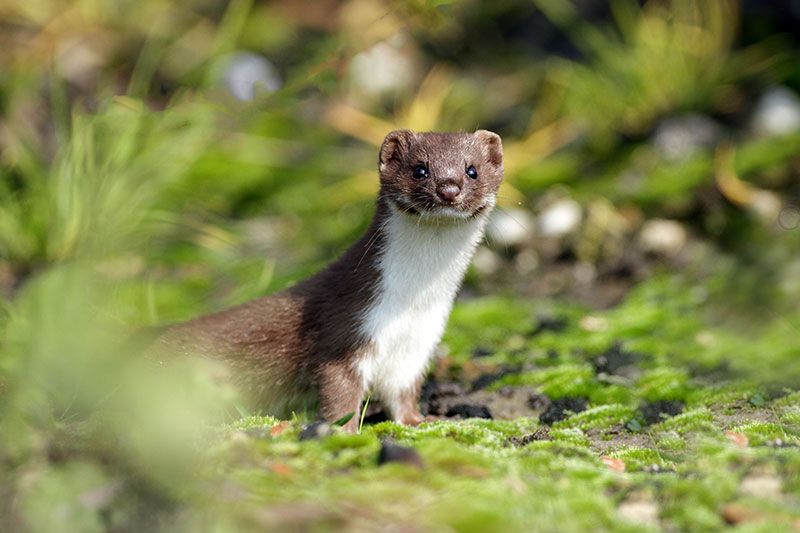Weasel

Status
Native, common and widespread
Population
450,000
Scientific name
Mustela nivalis
Weasels are Britain’s smallest carnivores. They have small, sleek bodies with chestnut-brown fur, a yellowish-white underside and a short tail. They look similar to stoats, which are larger and have a black tipped-tail. Weasels are solitary, elusive creatures, mostly active at night, and often hunt along hedgerows or stonewalls, sniffing out every hollow or crack. They are very agile climbers and also excellent swimmers. Whilst hunting, they often stand up on their hind legs to scan and smell their surroundings before dashing underground through burrows and tunnels in pursuit of their prey. Weasels face one disadvantage in being so small: they must eat a third of their body weight every day just to stay alive. They can reproduce quickly and can recover their numbers without difficulty after lean periods when food supplies are low. As a result they are one of the most successful mammals in the country.
Head-body length: 17 – 25cm (males are larger than females)
Tail length: 3 – 6cm
Weight: 50 – 195g (females are less than 110g)
Lifespan: Up to 3 years
Reproduction
Mating occurs from April to July and females produce one or two litters of 4 – 5 kits each year, depending on the availability of prey. They make their nests in the burrows of other small animals, and the young are born naked, blind and deaf in April or May; in years when the vole population peaks, a second litter may be born in July or August, and those born earlier in the year may themselves have litters. The young are weaned after 3 – 4 weeks. Hunting behaviour is developed by eight weeks and the offspring disperse around 9 – 12 weeks.
Diet
Mainly mice and voles, but also rabbits, small birds and eggs in spring.
Habitat
Almost anywhere that provides enough cover and prey, including sand dunes, farmland, grassland and woodland.
Predators
Foxes, owls, kestrels and cats.
Threats
They are also killed by gamekeepers, although traps are most often set for stoats, which are more of a threat to game birds.
Conservation status
GB Red List: Least Concern (LC).
Population size and distribution
GB population: 450,000. Widely distributed across Britain but absent from Ireland and some offshore islands, including the Isle of Man and the Channel Islands.
Did you know?
The weasel’s head is the widest part of its body and if it can squeeze its head into a hole, then the rest of it won’t get stuck.
